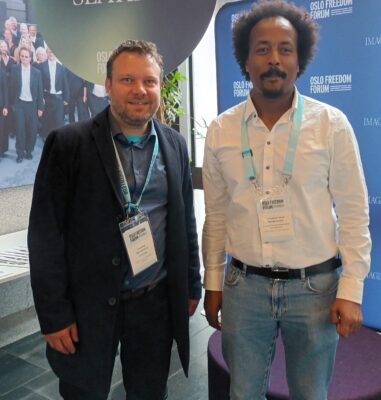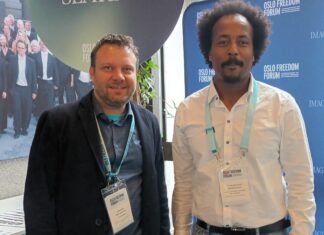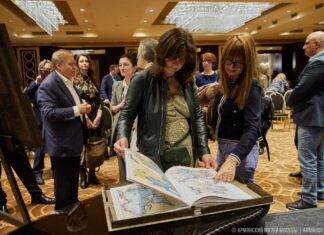To the Editors:
What possessed The Tablet, “a daily online magazine of Jewish news, ideas, and culture,” to publish filmmaker François Margolin’s ludicrous paean to Azerbaijan, “In the West Bank of the Caucasus”, which has precious little in it that is Jewish, news, ideas, or culture? Anticipating blowback, the author attempts to preempt criticism of his work, claiming a sort of high ground by asserting that he is simply “looking into the topic, which is the founding principle of journalism and documentary filmmaking.” However, his work in this article is light years from reaching such a standard.
Margolin claims that “Nagorno-Karabakh, seen from the Azerbaijani side, is a topic about which it is nearly impossible to write without finding yourself immediately accused of being funded by the government of Azerbaijan.” Indeed, Margolin should be given the benefit of the doubt and not accused of such a thing without evidence. In practice, though, recirculating Baku’s propaganda pro bono rather than for pay is a distinction without a difference.
Liam Hoare, writing in The Tablet, has cautioned against the instinct “to give Azerbaijan a pass for the simple reason that the state is good to its Jews, strong on anti-Semitism, and friendly towards Israel. It’s a rare combination, I’ll concede, but that instinct is lazy and sloppy, anti-intellectual and debasing, and ultimately dangerous.” Although writing in 2015, Hoare’s description fits Margolin’s puff-piece to a ‘T.’ “Nothing should justify journalists conducting public relations for one of the most authoritarian governments in Europe,” Hoare writes. “If Azerbaijan is an example of anything, it’s how to pull the wool over impressionable visitors’ eyes,” he aptly observes. Unlike Margolin, Hoare provides facts to support his statements.
Azerbaijan’s efforts to gain favorable depictions through bribery are well known. The corruption of Azerbaijan’s ruling Aliyev/Pashayev clan has been documented by the Guardian and the Organized Crime and Corruption Reporting Project (OCCRP), among other entities. Transparency International writes that “The ruling family has extended its reach into virtually all lucrative sectors of the economy and patronage networks permeate all spheres of public life and hamper the long-term economic and social development prospects of the country.”
According to Human Rights Watch, “Azerbaijan’s government continues to wage a vicious crackdown on critics and dissenting voices. The space for independent activism, critical journalism, and opposition political activity has been virtually extinguished as so many activists, human rights defenders, and journalists have been arrested and jailed, and laws and regulations restricting the activities of independent groups and their ability to secure funding adopted.”









